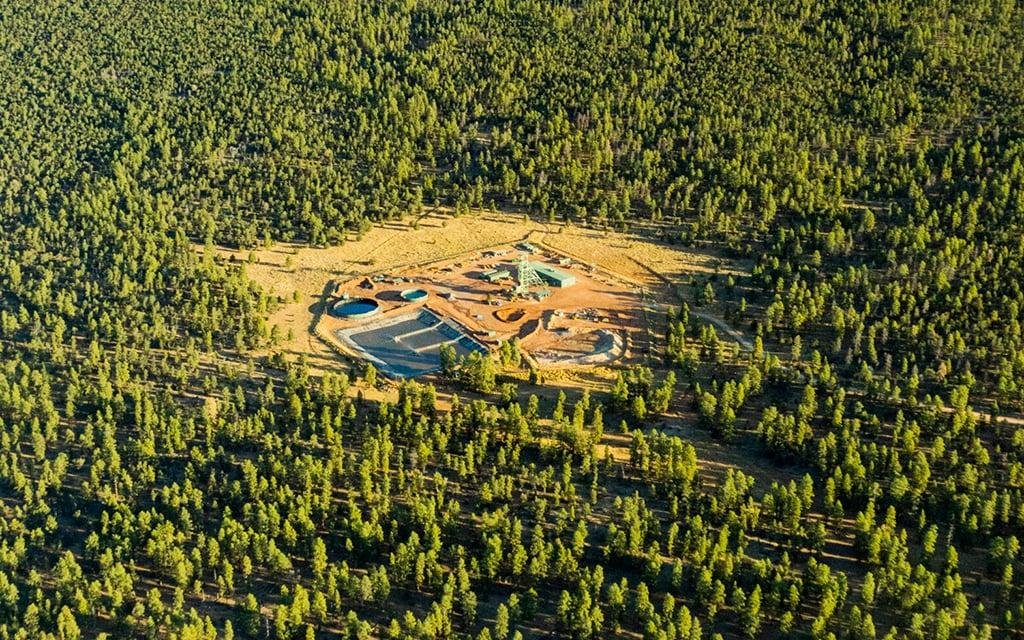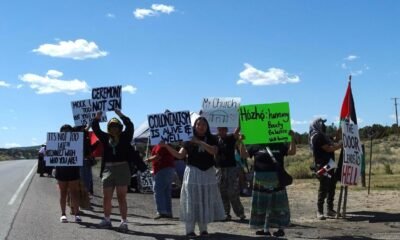Business
Uranium-Laden Trucks Navigate Navajo Nation, Igniting Deep-Rooted Anxieties

The Navajo Nation has finalized an agreement with Energy Fuels Inc. concerning the transportation of uranium through tribal territory. Nonetheless, concerns persist among many tribal members regarding potential risks associated with uranium contamination.
Tribal leaders indicated that the agreement was largely unavoidable, citing federal law that supersedes tribal rules regarding the transport of radioactive materials. Recently, two large trucks traveled from the Pinyon Plain Mine in Arizona’s Kaibab National Forest to the White Mesa Mill in southern Utah, covering over 260 miles along Highways 89, 160, and 191 while carrying uranium.
The trucks were dispatched on July 30, 2024, with minimal prior notification, prompting months of negotiations leading to the establishment of a transportation agreement aimed at enforcing safety and accountability standards. Kris Beecher, acting deputy attorney general for the Navajo Department of Justice, explained that federal regulations categorize uranium ore as a Low Specific Activity material, exempting it from stringent transport requirements.
In response to historical contamination issues, Indigenous communities in the Southwest have actively worked to prohibit uranium mining and transport on their land. The Navajo Nation enacted the Diné Natural Resources Protection Act in 2005, which prohibits uranium mining, and subsequently passed related legislation in 2012 to restrict the transport of hazardous materials within its borders.
Despite these local regulations, federal laws, specifically the Atomic Energy Act and the Hazardous Materials Transportation Act, take precedence. They override state and tribal rules that conflict, creating a challenging landscape for tribal governance. “The Navajo Nation has done the next best thing by entering into an agreement with Energy Fuels,” Beecher noted.
As part of the agreement, Energy Fuels will clean up 10,000 tons of legacy uranium materials from abandoned mines across Navajo land at no cost to the Nation. The company also committed to paying a fee based on uranium processed at the White Mesa Mill, projected to yield between $40,000 and $50,000 monthly, adjusted annually for inflation.
The agreement stipulates around ten truckloads per day of uranium ore transported, a process predicted to span two to four years depending on the mining output. Additionally, Energy Fuels will contribute $1.2 million to the Navajo Nation’s CERCLA fund, which supports environmental and public health initiatives.
With potential plans to mine uranium at the Roca Honda Mine in New Mexico, the existing agreement would extend to any transport of ore from that location through tribal territory. Specific routes and operational hours have been designated to limit transport during culturally significant events, and Energy Fuels is obligated to provide a 14-day notice before monthly transport schedules.
Mark Chalmers, president and CEO of Energy Fuels, acknowledged the historical impacts of past uranium mining and the resulting mistrust among the Navajo people. However, skepticism remains among some tribal officials and community members. Delegate Vince James expressed concern over the integrity of the agreement, stating, “We will continue to be lied to.”
Robyn Jackson, executive director of Diné C.A.R.E., raised alarms over safety measures such as inadequate dust covers on transport trucks, which could allow radioactive materials to escape. She highlighted that many community members would not be able to easily identify the warning symbols on the trucks.
The ongoing legacy of uranium contamination runs deep within the Navajo Nation, where 85% of residents reportedly live in homes affected by uranium exposure. Health risks vary from respiratory issues to severe illnesses like cancer. With the added factor of nutritional deficiencies exacerbating toxicity, local health advocates stress the need for heightened awareness and proactive measures.
Communities historically affected by uranium contamination face a troubling lack of resources; many must travel significant distances for medical care, particularly for serious health issues arising from past mining practices. Additionally, the Radiation Exposure Compensation Act, previously a source of financial support for affected individuals, is no longer providing compensation due to failures in reauthorization.
Although Energy Fuels has not disclosed specific earnings from the Pinyon Plain Mine, comprehensive sales figures for 2024 indicate robust profitability from uranium operations. Amid rising interest in uranium production, local leaders continue to voice concerns about renewed mining activities and their hazardous implications. “We are trying to fend off these renewed mining activities, but it is coming, and we just have to continue to fight,” remarked Etsitty of the Navajo EPA.


















